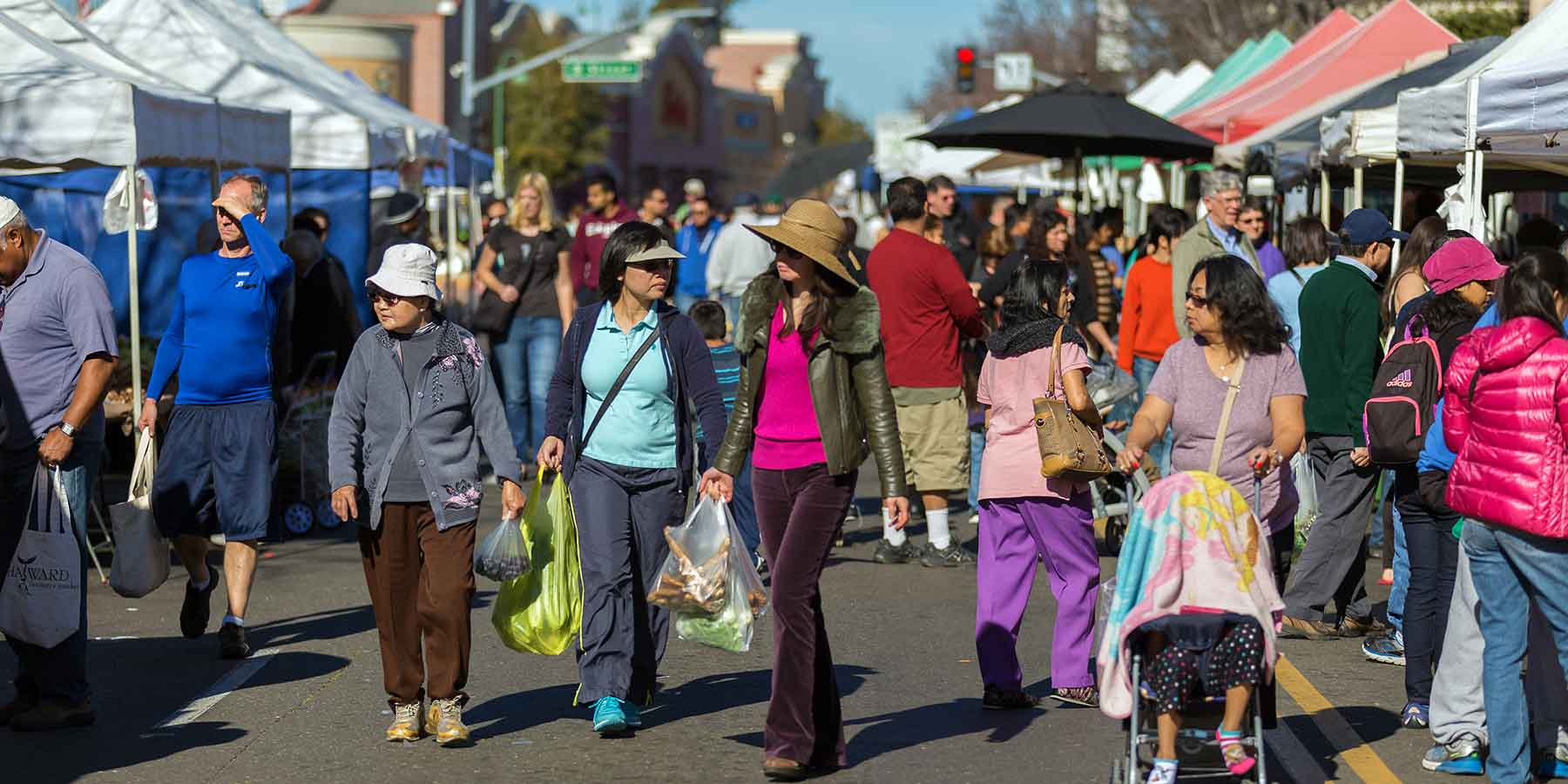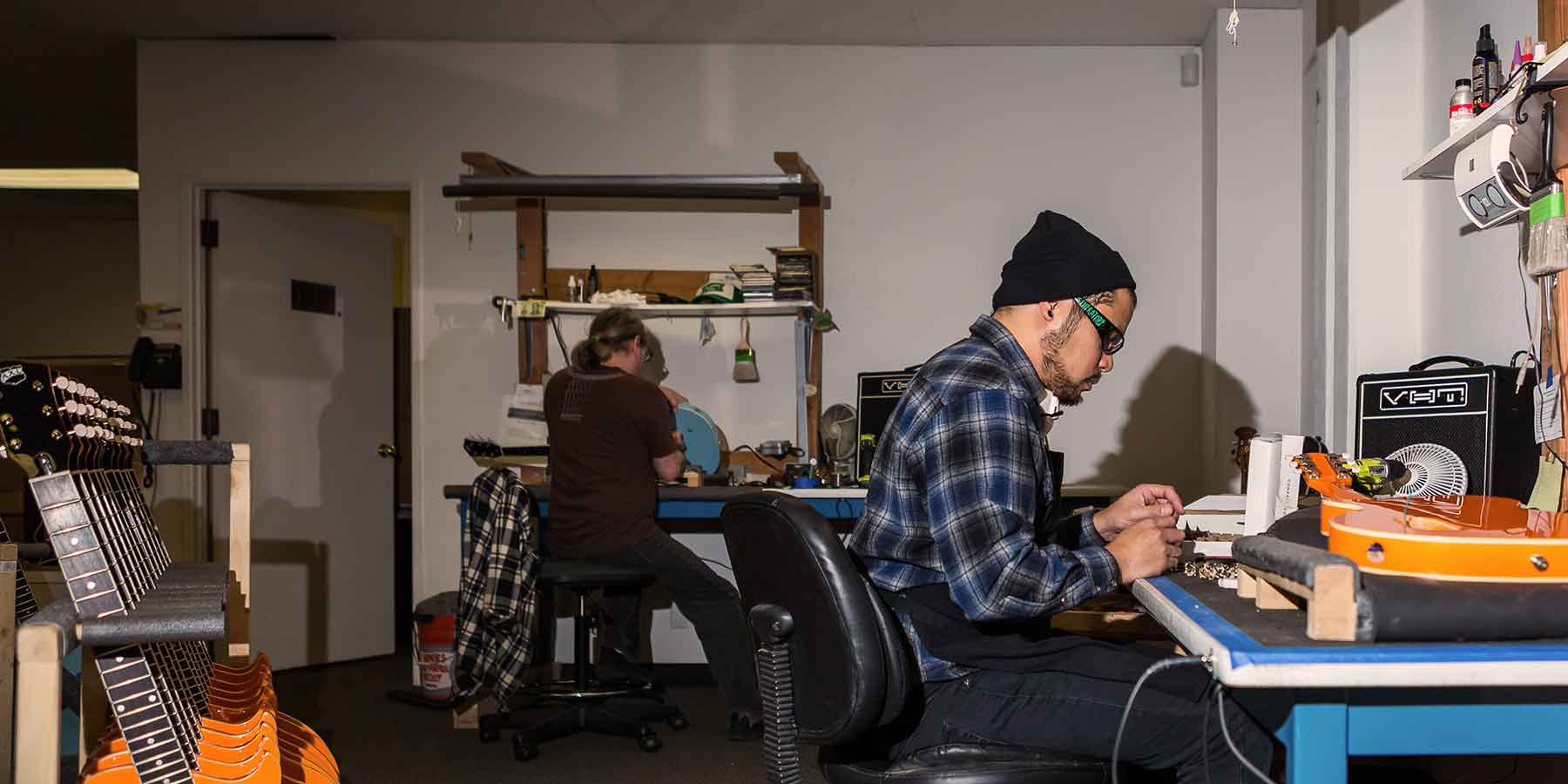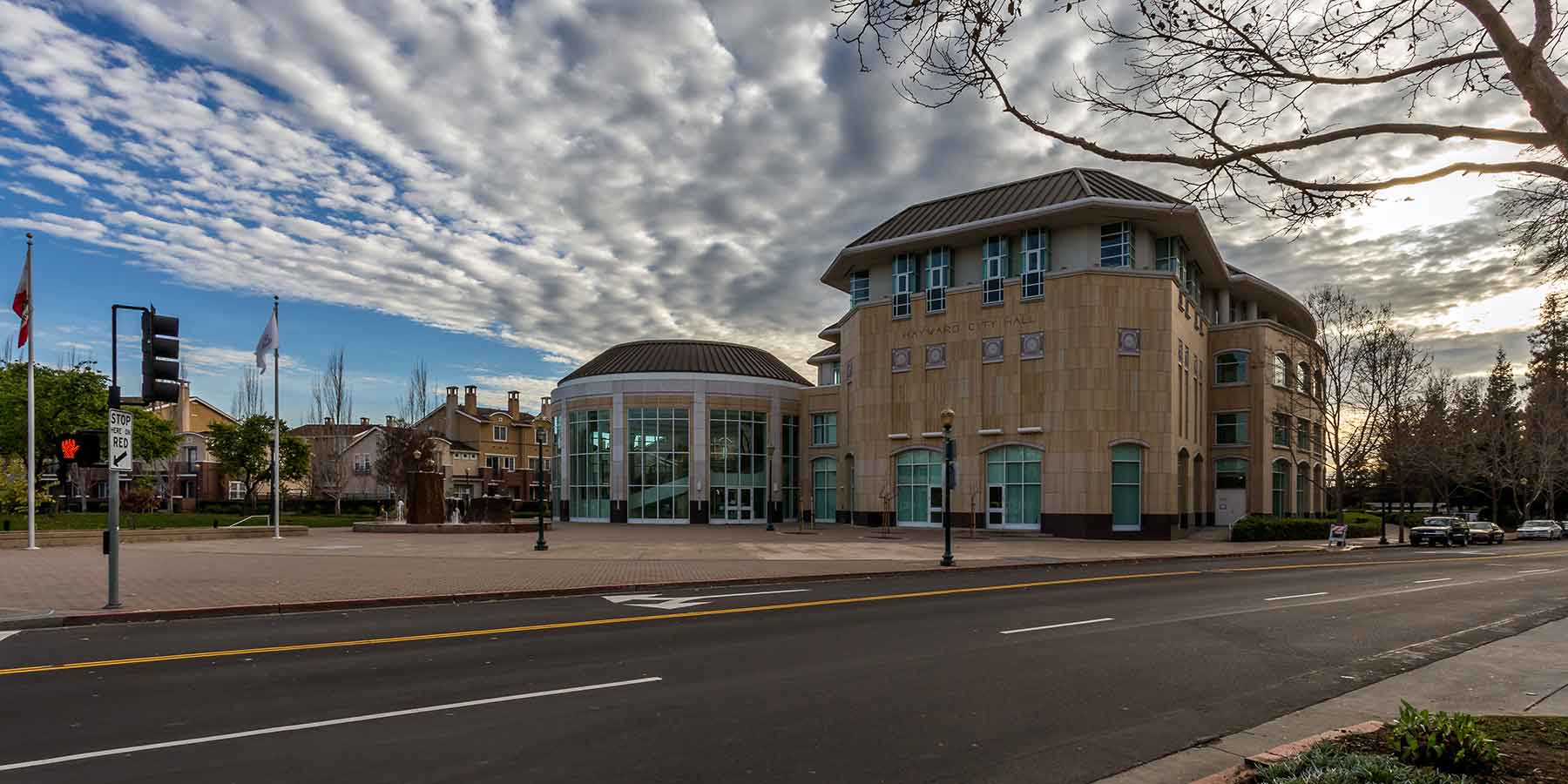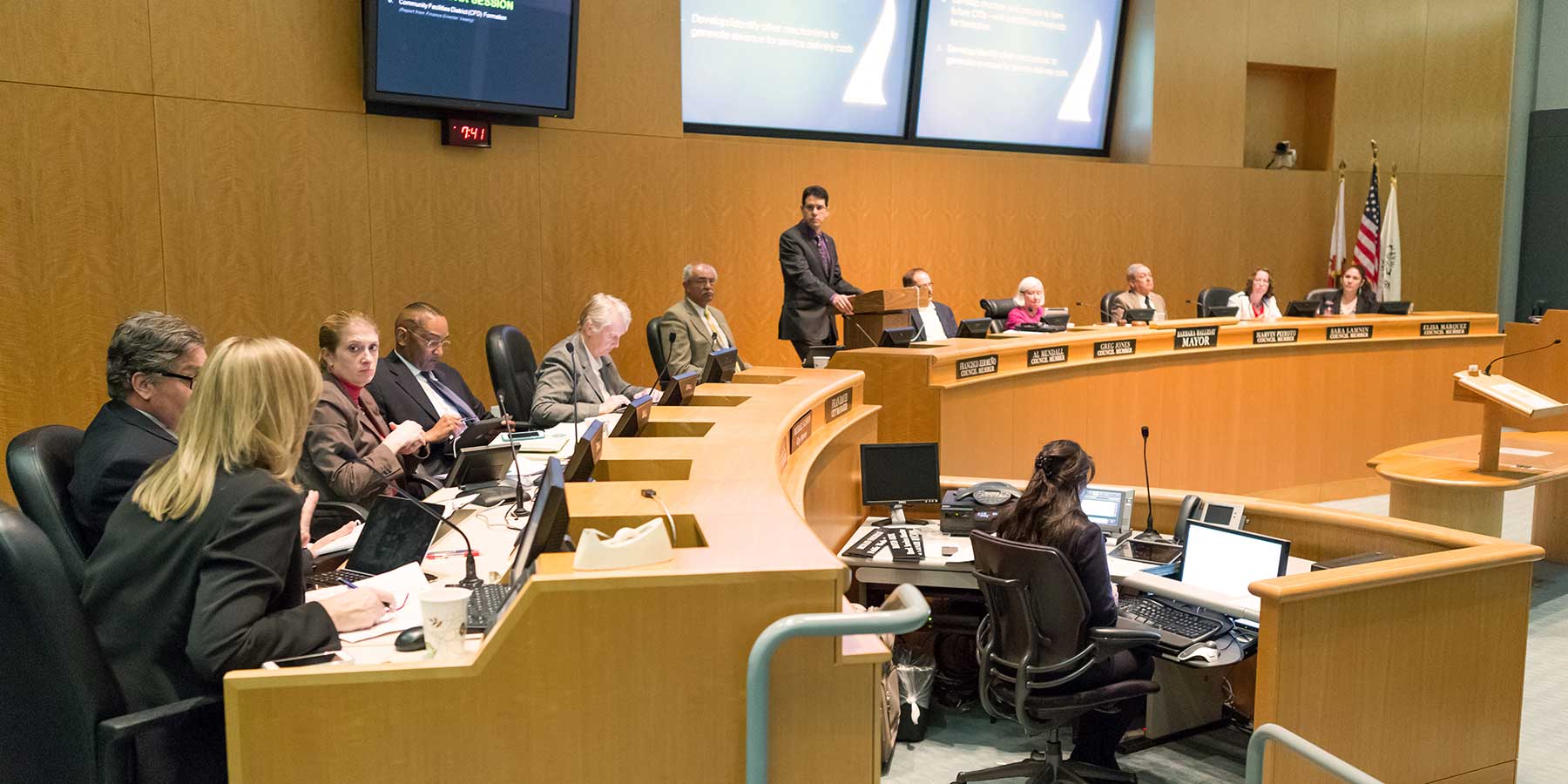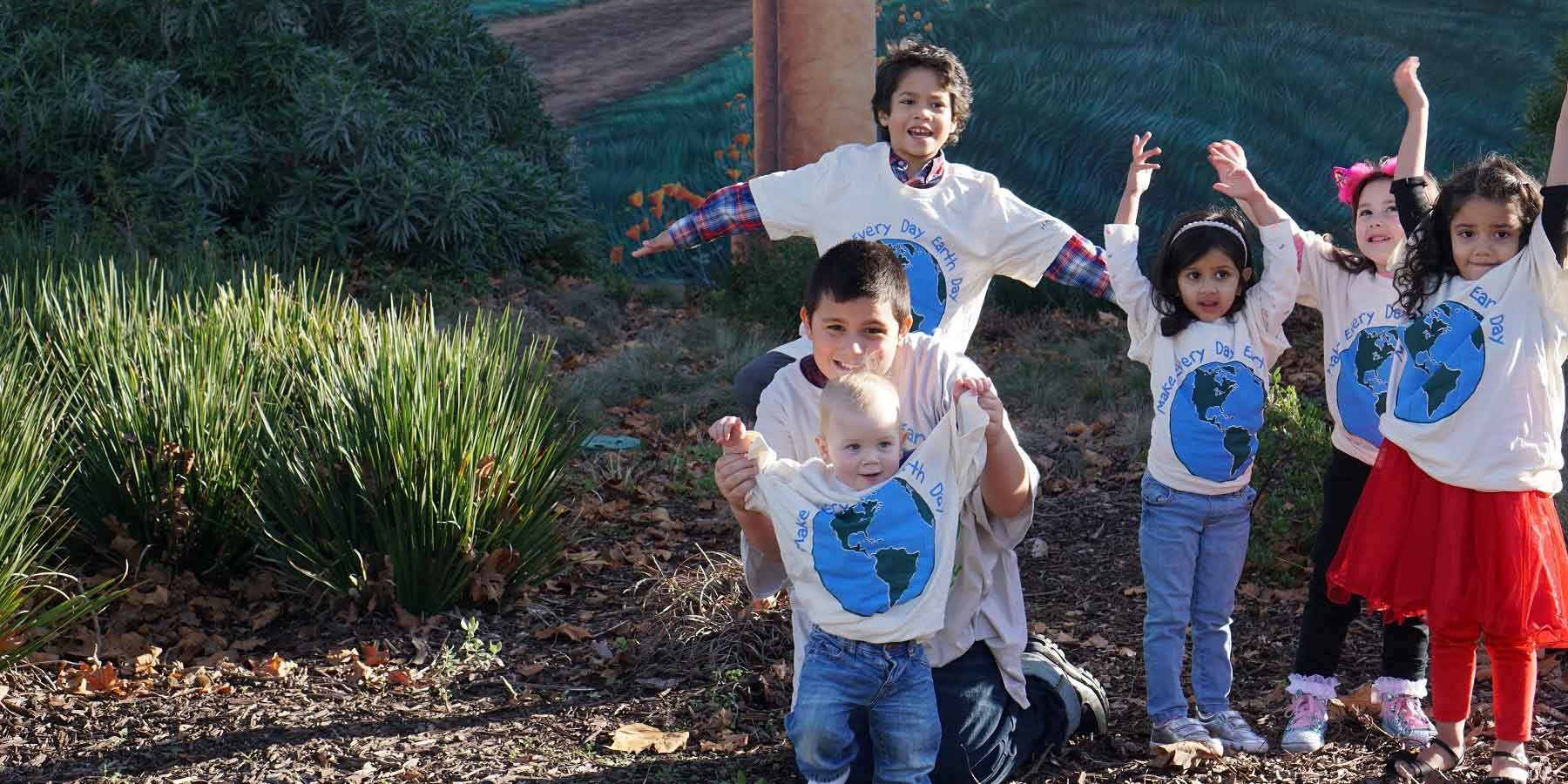Carbon Sequestration Measures
A carbon neutral future includes leveraging the greenspace within the City to reduce GHG emissions. For example, greenspace – like trees and planted landscapes – can be expanded and maintained to remove carbon from the atmosphere through natural biological processes called carbon sequestration, helping to reduce GHG emissions in the City.
Carbon Sequestration
To achieve carbon neutrality in 2045, Hayward will reduce GHG emissions across all sectors to minimize emissions to nearly zero. However, due to limitations in technology and the length of time that it takes to normalize new low-carbon behaviors, it is expected that some GHG emissions will remain under the City’s jurisdiction in 2045. Therefore, a carbon-neutral future incorporates methods for carbon sequestration to offset residual GHG emissions. Carbon sequestration strategies include enhancing and converting green spaces, planting trees, composting, and removing carbon from the atmosphere. The City will increase carbon sequestration by planting 1,000 new trees annually through 2030 to sequester carbon and create urban shade to reduce heat island effect (Measure CS-1). Applying compost to the land boosts soil health and allows for microbes to further sequester carbon in the soil from photosynthesis. The City will increase sequestration by applying 0.08 tons of compost per capita annually in the community through 2030 (Measure CS-2). Carbon sequestration strategies will be increasingly important as other sector emissions are reduced, state guidance is developed, and technologies come online.
Measures & Actions Detail
Measure CS-1: Increase carbon sequestration by planting and maintaining 1,000 new trees annually through 2030 to sequester carbon and create urban shade to reduce heat island effect.
Actions, co-benefits, City costs, community costs, and specific quantitative GHG emissions reductions associated with implementation of Measure CS-1 are included in Table 27.
Table 27: Measure CS-1 Actions
ACTION ID | ACTION DESCRIPTION |
|---|---|
| CS 1.1 | Update the Tree Preservation Ordinance by Q2 2024 to maintain existing carbon stock is maintained and that replacement trees that are climate resilient and drought tolerant for Hayward’s climate. Ordinance updates may include development requirements to protect or replace value-to-value existing trees and greenspace; and a requirement for a cash mitigation fee equal to the value of trees removed. Key Pillar: Structural Change |
| CS 1.2 | Develop and adopt an Urban Forest Management Plan that identifies: City’s potential capacity for new tree planting; timeframe and mechanism for implementation; a management plan for existing trees; and a tracking system to assess progress towards annual benchmark. Key Pillar: Structural Change |
| CS 1.3 | Identify and map public spaces that can be converted to green space, including freeway airspace that can be made into green space, vertical walls that can be planted with vines, and rooftops of public buildings that can be developed into gardens. Key Pillar: Feasibility Study |
| CS 1.4 | Partner with community groups to apply for community garden grants and develop new or expand existing community gardens based on the identified public spaces available for green space conversion. Key Pillar: Partnership/Funding |
| CS 1.5 | Adopt a standard policy and set of practices for expanding the urban tree canopy and placing vegetative barriers between busy roadways and developments to reduce exposure to air pollutants from traffic. Key Pillar: Equity |
| CS 1.6 | Conduct an urban canopy study to identify areas in Hayward that have below average canopy coverage and implement a tree planting program focusing on the least covered portions of the City. Establish a goal of having no significant difference in canopy coverage between high and low-income areas citywide by 2030. Key Pillar: Feasibility Study/Equity |
| CS 1.7 | In addition, or as an expansion to the Adopt-a-Block Program, establish an adopt-a-tree or adopt-a-street program that is specific to further greening and tree planting. The program will enable individuals, businesses, and community organizations to plant and care for trees in selected communities. The program should provide formalized information on appropriate trees eligible for planting in Hayward (i.e., native, drought tolerant, locations). Key Pillar: Education |
| CS 1.8 | Dedicate staff time to obtaining grant funding for tree planting. Identify and apply for applicable federal (e.g., USDA) and state (e.g., California ReLeaf, Affordable Housing and Sustainable Communities Program (AHSC), Urban and Community Forestry Program) grants for tree planting and maintenance projects. Key Pillar: Funding |
| CS 1.9 | Explore opportunities to fund the Urban Forest Management Program. Possibilities include use of general tax revenues, permit fees, or revenues from the municipal tree ordinance enforcement. Key Pillar: Funding |
| CS 1.10 | Establish a Tree Trust or Tree Endowment where the interest on the principal can be used for purchasing trees, paying for tree maintenance, or for staff resources for the Urban Forest Management Program. Key Pillar: Funding |
| CS 1.11 | Partner with private developers, CSUEB, Chabot College, HARD, HUSD, and other community-based organizations to support and contribute to the Urban Forest Management Program Key Pillar: Partnerships |
| CS 1.12 | Establish alternative fee mechanisms, similar to the SF Carbon Fund, to fund nature-based solutions. By 2026, create permanent code and financial incentives for homeowners and other private landowners to preserve existing mature trees and shrubs and to plant local native species. Key Pillar: Funding |
| CS 1.13 | Identify existing greenbelts and the best locations for new greenbelts for wildfire defense and risk reduction. Incorporate these locations into comprehensive wildfire planning at regional, county, city, and community levels and in all municipal service reviews. Key Pillar: Feasibility Study |
| Total GHG Emissions Reduction from Measure: 2030: 212 MT CO2e, 2045: 743 MT CO2e | |
| City Cost: Moderate | |
| Community Cost: Low | |
| Co-Benefits: Improved Public Health & Safety, Climate Change Resilience, Environmental Quality & Ecosystem Services | |
Measure CS-2: Increase carbon sequestration by applying 0.08 tons of compost per capita annually in the community through 2030.
Actions, co-benefits, City costs community costs, and specific quantitative GHG emissions reductions associated with implementation of Measure CS-2 are included in Table 28.
Table 28: Measure CS-2 Actions
ACTION ID | ACTION DESCRIPTION |
|---|---|
| CS 2.1 | Enforce compliance with SB 1383 by establishing a minimum level of compost application per year on applicable/appropriate land throughout the City including City-owned land. Key Pillar: Structural Change |
| CS 2.2 | Adopt procurement policies to comply with SB 1383 requirements for jurisdictions to purchase recovered organic waste products. Key Pillar: Structural Change |
| CS 2.3 | Work with Hayward Area Recreation and Park District to develop and adopt urban park guidelines that: 1. Provide flexible solutions for developing urban parks in infill areas where traditional neighborhood and community parks are not feasible; 2. Establish guidelines for achieving the greatest carbon sequestration potential of parks via design; 3. Are equitable in ensuring such urban parks are accessible for lower-income residents while avoiding displacement, in alignment with the Parks Master Plan. Key Pillar: Structural Change/ Equity |
| CS 2.4 | Identify locations within Hayward to apply compost to help meet the procurement requirements of SB 1383. Key Pillar: Feasibility Study |
| CS 2.5 | Work with StopWaste to provide residents, businesses, and developers with educational material on best practices for using compost in landscaping. Key Pillar: Education |
| CS 2.6 | Explore opportunities to use the parkland in-lieu fees from the updated City’s Property Developers - Obligations for Parks and Recreation Ordinance (Article 16 of City’s municipal code) to implement the Carbon Management Activities Program (NR 15). Key Pillar: Funding |
| CS 2.7 | Collaborate with Chabot College, CSUEB, and local schools to identify opportunities to apply compost to landscaping. Key Pillar: Partnerships |
| CS 2.8 | Work with Alameda County and StopWaste to identify opportunities for a regional compost procurement program to help meet the organics procurement provisions of SB 1383. Key Pillar: Partnerships |
| CS 2.9 | Work with the City’s franchisee under the new franchise agreement with Waste Management of Alameda County to provide compost throughout the community. Key Pillar: Partnership |
| CS 2.10 | Conduct a study to identify opportunities to enhance or create new natural areas in existing open spaces, parklands, and fields with native species, biodiverse ecology, higher carbon sequestration potential and improved recreational connectivity for the community. Key Pillar: Feasibility Study |
| CS 2.11 | Create and deliver a range of resources to train residents, city gardening staff, and other institutions on how to incorporate biodiversity, soil, and carbon sequestration techniques into landscaping and gardening projects. Key Pillar: Education |
| Total GHG Emissions Reduction from Measure: 2030: 3,081 MT CO2e, 2045: 3,392 MT CO2e | |
| City Cost: Low | |
| Community Cost: Low | |
| Co-Benefits: Improved Public Health & Safety, Climate Change Resilience, Environmental Quality & Ecosystem Services | |



